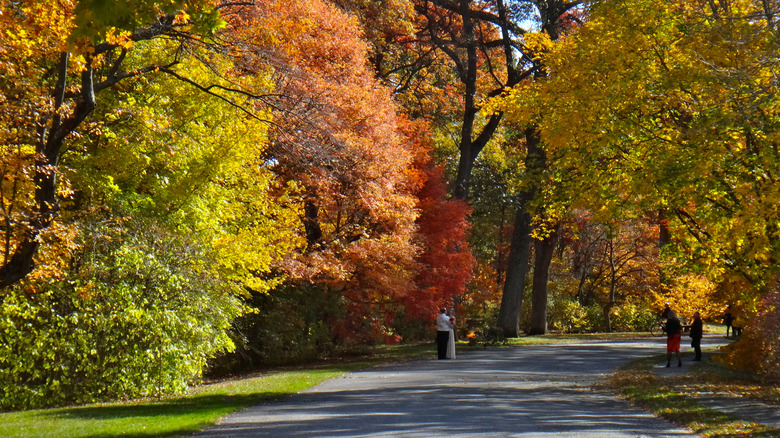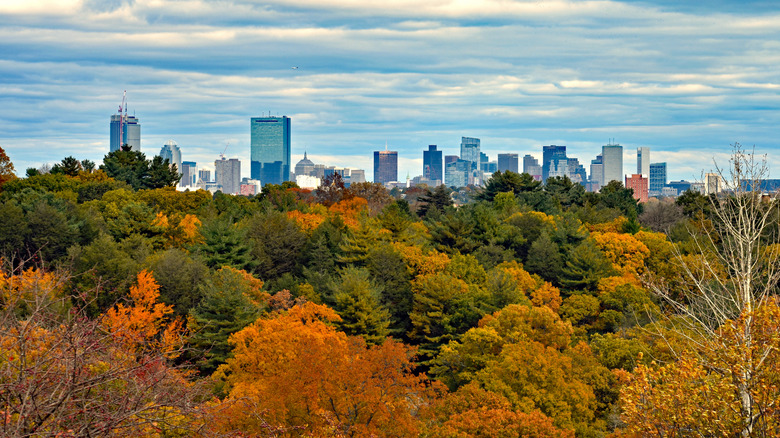Some Of Boston's Best Fall Colors Are Hidden Behind Gates Inside America's Oldest Arboretum
Boston is one of the world's greenest cities, and nowhere is this more apparent than when you slip through the iron gates of the Arnold Arboretum in Jamaica Plain. You'd never guess that a 281-acre sanctuary lies just beyond that entrance. With its rolling hills, winding paths, and some of the most spectacular autumn displays in New England, the arboretum feels worlds away from city life.
Frederick Law Olmsted — the same landscape architect who designed Central Park — planned the Arnold Arboretum as part of his ambitious Emerald Necklace. The "necklace" is a magnificent 7-mile chain of parks stretching from Boston Common (home to America's oldest public park), all the way through Brookline and Jamaica Plain.
It's a shame that so many people overlook this remarkable collection of over 15,000 plants right in Boston's backyard, collected from temperate zones across the globe and curated by Harvard University for over 150 years. The Arboretum hosts about 70 different maple species alone, along with rare specimens like ginkgo trees that don't exist anywhere else in the wild. There are also Franklin trees, which bloom with delicate white flowers just as their leaves turn fire red.
Appreciate fall colors at their peak in Boston's Arnold Arboretum
While wandering around without a plan still makes for a wonderful time in Arnold Arboretum — especially when fall is in full swing — it probably means you'll miss the best trails. For the perfect warm-up loop, start at the Forest Hills gate in Jamaica Plain and head for Bussey Hill. Being at the heart of the arboretum, you get a sense of the incredible scope you're dealing with. From there, make your way to Peters Hill for the best vistas. This is the highest point in the entire Emerald Necklace system, and the view over the foliage canopy with Boston's skyline peeking through is breathtaking.
The climb up Peters Hill Road takes you through hawthorns and crabapples that show off brilliant reds and oranges during fall. When you reach the summit area, you'll find one of the world's most important ginkgo collections, which turn a lovely shade of yellow when the temperature drops. Along Meadow Road, you'll pass through the katsura trees, which release a distinctly sweet scent when their leaves age that's reminiscent of passing by a bakery. It's also here where you'll encounter the iconic maple trees, all 70 different species of them side by side. You can compare how dramatically leaf shape, color timing, and intensity vary across this well-known genus.
Michael Dosmann, who holds the rather enchanting title of "Keeper of the Living Collections," points out in an interview with The Boston Globe that most people only know sugar maples. This is why it's so impressive that the arboretum's international maple collection shows fall colors in every conceivable hue and pattern. And if you return in spring, the arboretum's six different cherry varieties also make it one of the country's top cherry-blossom viewing spots, with the trees blooming at staggered intervals throughout April.

